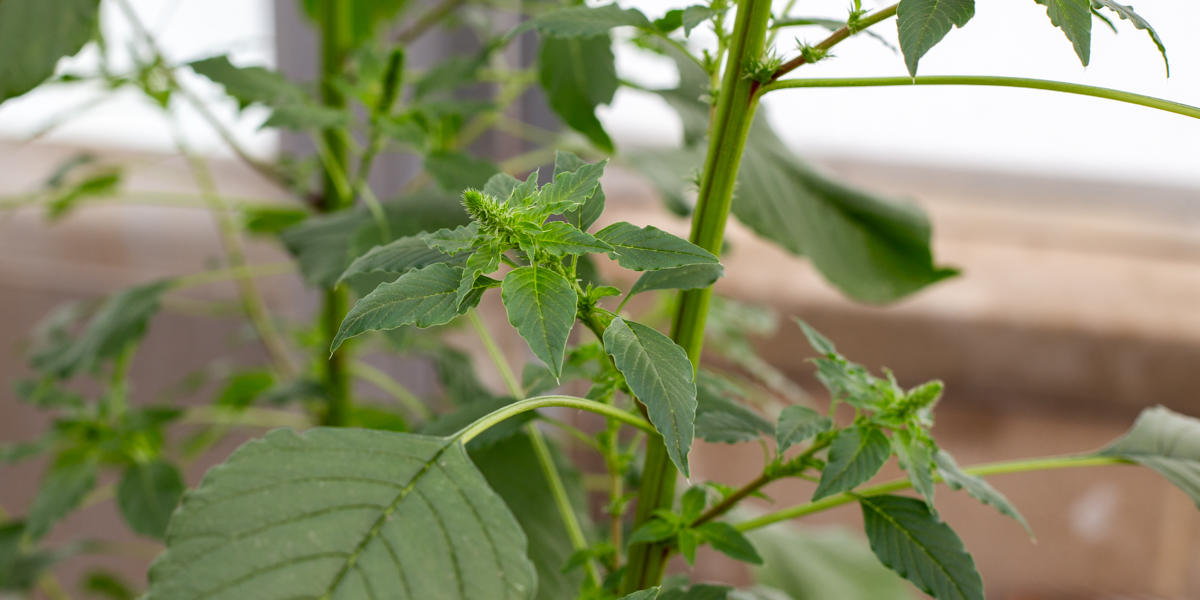
Palmer amaranth in a greenhouse. Image credit: Domini Brown.
Background
Effective management of invasive plant species requires timely detection and monitoring. Traditional methods like field scouting are labor-intensive and time-consuming, making them unsuitable for large-scale monitoring, especially for areas that are difficult to reach.
Several studies have used satellite and/or drone remote sensing for detecting invasive plant species in the flowering stage. MITPPC researchers aim to develop a remote sensing approach for the early detection and mapping of invasive species in Minnesota. They will use 3 invasive species as case studies: Palmer amaranth, spotted knapweed, and Canada thistle. Each of these have been selected for monitoring in farmlands and natural areas.
Research questions
- How can satellite remote sensing be used to detect and monitor the spread of Palmer amaranth, spotted knapweed, and Canada thistle in Minnesota?
- What are the capabilities of drone hyperspectral remote sensing capabilities to detect, confirm, monitor at a fine scale, and map these species?
Practical implications
Researchers will develop a dual-level remote sensing approach for monitoring invasive species in Minnesota. They aim to provide timely information to growers and legislators based on two-level remote sensing, enabling them to make effective management decisions to prevent the spread of invasive plant species.
Outcomes
This project began in January 2024 and is in progress for the next several years. Please check back at a later time for updates.
To stay connected, sign up for the MITPPC newsletter and follow us on Facebook and LinkedIn.